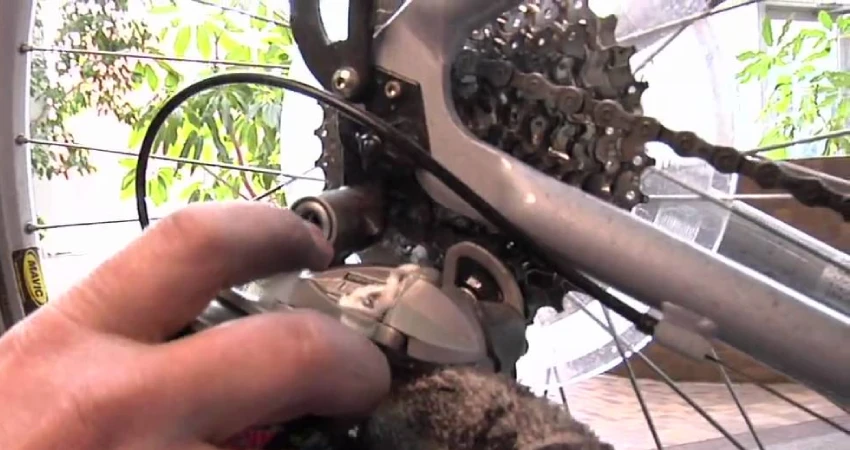Do you find yourself struggling with squeaky or inefficient bike brakes? If so, you’ve come to the right place. In this article, we will walk you through the step-by-step process of how to oil bike brakes to ensure they are operating smoothly and effectively.
There’s nothing worse than embarking on a biking adventure only to be hindered by brakes that are less than optimal. But fear not! With just a little time and effort, you can easily remedy this issue and have your bike brakes working like new.
So, if you’re ready to learn how to oil bike brakes and regain full control and confidence in your rides, let’s dive in.
Oiling Bike Brakes: A Step-By-Step Guide

Over time, your bike’s brakes may start to feel sluggish or squeaky, indicating that they require oiling. By learning how to oil bike brakes, you can keep them in top-notch condition and enjoy a worry-free ride.
Why is Oiling Bike Brakes Important?
Before we dive into the steps of oiling bike brakes, let’s understand why it is crucial. Oiling your bike brakes provides various benefits, such as:
1. Enhanced Performance: Properly oiled brakes ensure smooth and responsive stopping power, allowing you to safely control your bike’s speed.
2. Extended Lifespan: Regular oiling minimizes wear and tear on brake components, extending the overall lifespan of your bike’s braking system.
3. Noise Reduction: Squeaky brakes can be annoying both for you and those around you. Oiling helps reduce brake noise, providing a quieter riding experience.
Gather the Necessary Tools and Materials
Before beginning the oiling process, it’s essential to gather the necessary tools and materials. Having everything ready will help ensure a smooth and efficient brake maintenance session. Here’s what you need:
1. Bike stand or props: These will elevate your bike, allowing you to work comfortably and access the brakes easily.
2. Clean cloth or towel: Use this to wipe the brake components and remove any excess oil or dirt.
3. Brake oil: Choose a high-quality brake oil, specifically designed for bicycle brakes. Consult your bike’s manual or your local bike shop for the recommended type of brake oil.
4. Small container: Use this to collect any excess oil that drips off during the oiling process.
5. Allen wrench or screwdriver: These tools will be required to remove the brake components from the bike frame, depending on your bike’s brake system.
Step-by-Step Process for Oiling Bike Brakes
Now let’s get to the heart of the matter – how to oil your bike brakes. Follow these step-by-step instructions to ensure a successful brake oiling session:
1. Elevate Your Bike
Using a reliable bike stand or props, elevate your bike and secure it in a stable position. This will make it easier to access and work on the brake components.
2. Remove the Wheels
To oil your bike brakes properly, you need to remove the wheels first. Loosen the quick-release levers or use the appropriate tools (allen wrench or screwdriver) to release the wheels from the bike frame. Once removed, set them aside in a safe place.
3. Clean the Brake Components
Before applying oil, it is crucial to clean the brake components to remove any dirt, debris, or old oil residue. Take a clean cloth or towel and gently wipe the brake pads, calipers, and any other relevant parts. This will ensure optimal oiling and prevent contamination.
4. Apply Oil to Brake Pads
Apply a few drops of brake oil onto the brake pads. Ideally, one or two drops per pad should be sufficient. Ensure that the oil is evenly distributed across the surface of the brake pads for optimal coverage.
5. Lubricate the Calipers
Next, lubricate the calipers by applying a small amount of oil to the moving parts, such as pivot points and springs. This will reduce friction and ensure smooth operation.
6. Check and Realign Brake Pads
After oiling the brake pads and calipers, closely inspect the brake pads’ alignment. Make sure they are centered and aligning correctly with the rim or rotor. If necessary, adjust them using the provided adjustment screws or nuts to ensure even contact and adequate braking performance.
7. Reinstall the Wheels
Once you are satisfied with the brake components’ alignment and functionality, it’s time to reattach the wheels. Lift the wheels back onto the bike frame, ensuring they are properly seated in the dropouts. Tighten the quick-release levers or fasten the nuts securely.
8. Test Your Brakes
Before hitting the road, it is crucial to test your brakes to ensure they are functioning correctly. Squeeze the brake levers firmly and check if the brakes engage smoothly and provide sufficient stopping power. If needed, adjust the brake cable tension or consult a professional bike mechanic for assistance.
Frequently Asked Questions
1. How often should I oil my bike brakes?
It is recommended to oil your bike brakes every 300-500 miles or whenever you notice the brakes are not performing optimally. Regular maintenance helps ensure smooth and efficient braking.
2. Can I use any type of oil to lube my bike brakes?
No, it’s important to use a specific brake lubricant designed for bike brakes. Avoid using any oil or grease that is not specifically formulated for bike brakes, as they can cause damage or reduce braking performance.
3. How do I oil my bike brakes properly?
To oil your bike brakes, start by cleaning the brake calipers and brake pads. Then, apply a small amount of brake lubricant to the pivots and springs of the brake calipers. Finally, wipe off any excess oil and test the brakes to ensure they are functioning properly.
4. Can I oil my bike brakes without removing the wheels?
Yes, you can oil your bike brakes without removing the wheels. Simply rotate the wheel to access the brake calipers and apply the lubricant as mentioned in the previous question.
5. What should I do if my bike brakes are still not working properly after oiling?
If your bike brakes are still not functioning properly after oiling, it may be necessary to inspect and adjust the brake pads, or even replace them if they are worn out. It’s always a good idea to consult a professional bike mechanic for further assistance if needed.
Final Thoughts
In conclusion, properly maintaining and oiling your bike brakes is essential for ensuring their effectiveness and longevity. By following the steps outlined in this article, you can easily oil your bike brakes and keep them in optimum condition.
Regularly inspecting and cleaning your brake components, applying the oil correctly, and testing the brakes afterwards are all vital steps in this process.
By doing so, you can enhance your bike’s braking performance and overall safety. So, next time you need to oil your bike brakes, refer back to this guide for a hassle-free experience on how to oil bike brakes.

